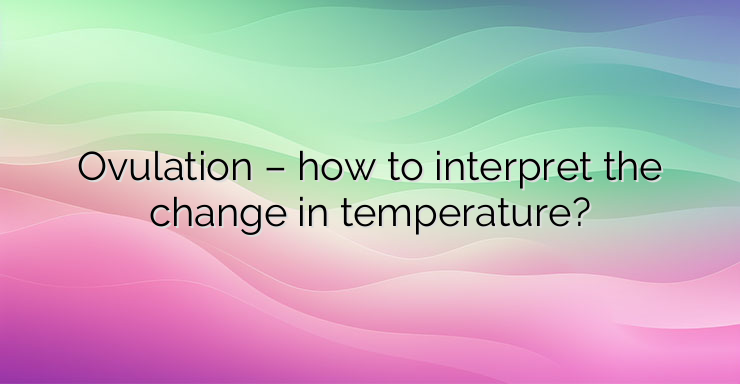The temperature curve is an easy and affordable way to determine the date of ovulation, in order to establish the period in which fertilization can take place and thus increase the chances of pregnancy. Interpretation of the curve The presence of a thermal rise with a plateau in the second part of the cycle confirms the presence of ovulation. Ovulation occurs the day before the temperature rises, or more precisely, the day when the temperature drops slightly and then rises again. Therefore, the temperature curve allows ovulation to be determined only afterwards: when the temperature rises, ovulation has already passed and the period in which fertilization can take place has ended. It is possible to predict the date of ovulation in the next cycle by noting how many days after the start of the cycle ovulation occurred and according to this delay to calculate the day. However, this is only valid in case of regular menstrual cycles. When is a temperature curve difficult to interpret? If the curve does not show a plateau, but a flat or monophasic curve is observed, it means that there was no ovulation – anovulation. If this is repeated over several cycles, it is advisable to consult a specialist. However, it should be noted that 20% of women with ovulatory cycles do not show noticeable temperature changes. This method also makes it possible to give a summary assessment of the quality of ovulation according to the duration of the luteal phase, which is usually 12 to 14 days. If the thermal plateau lasts less than 8 to 9 days in several consecutive cycles, poor quality ovulation is suspected – dysovulation. Therefore, it is advisable to carry out a consultation and further research. Various factors can change the body temperature: intake of certain drugs, infection, short night’s sleep, stress, night work, factors of everyday life and others. Is the temperature curve reliable? One study compared the date of ovulation detected by the temperature curve with that detected clinically by endovaginal ultrasound. The result was that the date match was found only 30.4% of the time. References: https://www.passeportsante.net/fr/grossesse/Fiche.aspx?doc=courbe-temperature-date-ovulation


Leave a Reply